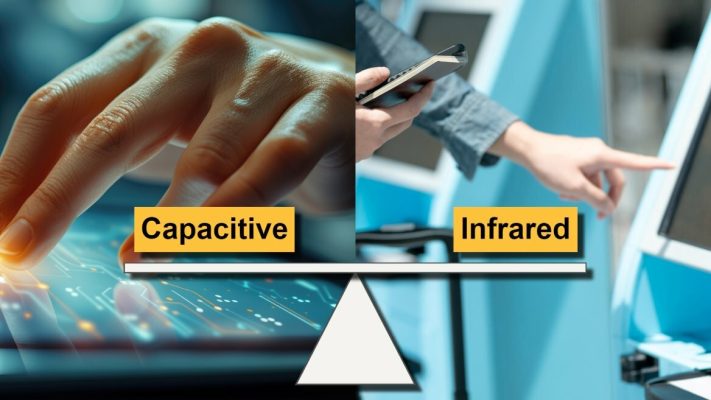Touchscreen Solutions
Comparing the Different Capacitance Touchscreen Technologies
Surface Capacitance
Surface capacitance is a simple form of touchscreen technology in which one side of the insulator is coated with a conductive layer. The device works by applying a small but noticeable electric charge to this side of the later, which subsequently creates a uniform electrostatic field. Upon touching the interface, it creates a capacitor; thus, allowing the device’s controller to identify the precise location of the touch. Surface capacitance is a simple yet highly effective form of touchscreen technology.
Projected Capacitance
Another type of capacitive touchscreen technology is projected capacitance. Also known as PCT or PCAP, it’s comprised of several matrix rows and columns consisting of conductive material. When projected capacitance devices are being constructed, the rows and columns are either etched on a single conductive layer to create a grid-like array of electrodes, or they are etched on two different layers of conductive material with parallel lines. Much like surface capacitance, an electrical charge is applied to this grid; thus, creating a uniform electrostatic field that’s measured when a human finger touches it. Capacitance can be measured at every point on the grid, resulting in a higher level of accuracy when compared to other touchscreen technologies.
Mutual Capacitance
Mutual capacitance is a relatively common way in which to produce touchscreen devices with capacitive technology. It features a capacitor that’s created by the row and column traces at each intersection in the grid. An electrical charge is applied to the rows and columns, which is then distorted upon touching. Mutual capacitance devices identify touch based on the changes in this electrical charge. Because the human finger contains an electrical charge, it naturally distorts the field created by this device and other capacitive devices.
Self-Capacitance
Much like mutual capacitance, self-capacitance touchscreen devices have X-Y grid patterns for their sensors. They differ, however, in the sense that these rows and columns function independently of one another. The electrical charge created by the finger is measured on each column or row by a meter. This allows for a stronger signal when compared to mutual capacitance. The downside, however, is that they are more prone to accuracy errors such as ghosting. In any case, self-capacitance is still a viable option to consider when choosing touchscreen technology.

